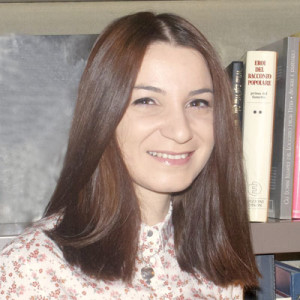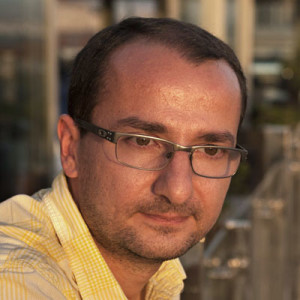SAS Recognizes “Best Conference Paper Award” Recipients
The Society for Armenian Studies announced the recipients of its 2015 “Best Conference Paper Award” at its Annual Membership Meeting on November 17, 2016 in Boston. Recognized were co-winners Gohar Grigoryan for her paper “Manifestations of Mongol-Armenian Relations in the Royal Art of the Armenian Kingdom of Cilicia” and Khatchig Mouradian for his paper “Genocide and Humanitarian Resistance in Ottoman Syria, 1915-1916.”
The SAS Executive Council annually awards a $500.00 prize for the best paper presented by a graduate student at a conference in a calendar year. A committee appointed by the Executive Council judged the papers.

Gohar Grigoryan
Gohar Grigoryan’s paper discusses Mongol-Armenian relations in the 13th century through the lens of a study of the depiction of the robe of Prince Levon in manuscript No. 8321 in the Matenadaran, attributed to the artist Toros Roslin. She argues in her study that one of the major motifs found in the miniature painting, “The Lion and the Sun,” was “borrowed from Persian culture not through the Byzantine, or Seljukid arts or through the revival of old Armenian royal traditions, but rather through the Mongols.” Her paper was presented at the conference “Élites chrétiennes et formes du pouvoir en Méditerranée centraleet orientale (XIIIe-XVe siécle),” held at the Université de Nîmes, Université Paul-Valéry-Montpellier, in June 1915.
Grigoryan is a graduate of the Yerevan State University Department of Art History, where she received both her B.A. and Master’s Degree. She is currently a doctoral candidate in the Department of Medieval Art History at the University of Fribourg. Her doctoral dissertation is on “Royal Images of the Armenian Kingdom of Cilicia (1198-1375).”

Khatchig Mouradian
Khatchig Mouradian’s paper was presented at the conference “The Genocide of the Armenians of the Ottoman Empire in the Great War,” organized by the International Scientific Council (CSI), 25-27, in March 2015.
Mouradian provides a reassessment of what is referred to as the “second phase of the Armenian genocide,” emphasizing the role of an Armenian-led humanitarian network in saving thousands of lives. The scholarship (and the popular discourse) on humanitarian efforts during the Genocide focuses on western missionaries and consuls, but Mouradian argues that it was the Ottoman Armenians who “led the resistance effort and shouldered the larger share of the burden, distributing humanitarian aid and funds to deportees.”
Mouradian is a graduate of the Strassler Center for Holocaust and Genocide Studies at Clark University and completed his PhD in January of 2016. Since 2014, Mouradian has taught courses History and Sociology departments at Rutgers and at Worcester State University. In the fall of 2016, he was the Henry S. Khanzadian Kazan Visiting Professor at California State University, Fresno.
The Society of Armenian Studies is an international body, composed of scholars and students, whose aims are to promote the study of Armenian culture and society, including history, language, literature, and social, political, and economic questions; to facilitate the exchange of scholarly information pertaining to Armenian studies around the world; and to sponsor panels and conferences on Armenian studies.







